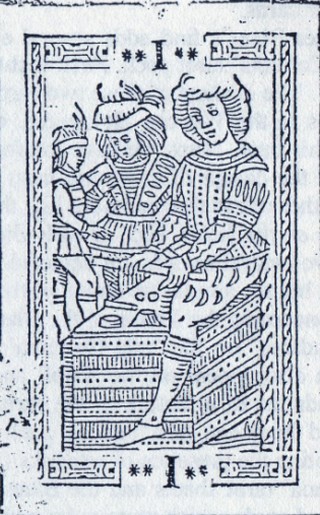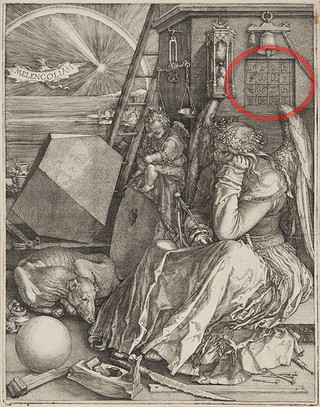ANCIENT CARD TRICKS WITH MINCHIATE
by Franco Pratesi (1987)
(from: Playing-Card World, The IPCS Newsletter, No. 50, November 1987, pp. 23-24.)
|
Recently, I have discovered some peculiar ways in which Minchiate cards have been used in the past. Since they have not been described before, and since, moreover, no other card packs could have been used instead, I think it worthwhile to communicate the details. In this instance, we are no longer in the usual field of playing intelligent card-games either in partnership or each for himself, but rather in the domain of puzzles and/or tricks. As mentioned, a remarkable number of the tricks described are based on cards, and a few among these use the Minchiate pack. Of course, if a card trick was performed in Tuscany, it is not surprising that Minchiate was used. I had come across several such descriptions in other treatises, but generally the tricks could be carried out equally well with the standard 52-card pack or, at least, with an ordinary tarot pack. Here, on the contrary, I found at least two tricks actually requiring a Minchiate pack. The first one belongs to the typical card clocks, and it can be applied to the 24-hour day using Minchiate. The trick, reported on pp. 59-61, uses the following scheme: you place the first 24 trumps of the Minchiate pack exactly in order face down in a circle, knowing where the series begins, and then you ask someone to touch a card and think of an hour. Then you ask the same person to count, starting from the touched card and proceeding anticlockwise, from the number he thought of up to a number which you have calculated silently by adding 24 to the number of the touched card. If the counts are right, one ends with the Minchiate card that bears the number first thought of. Near the end, the anonymous author adds that the same trick can be done reducing the cards to 12; however, the Minchiate 24-hour clock is something that does not deserve total oblivion, although we are now more accustomed to a 12-hour dial (and the new generation even more to digital displays). The other trick concerns magic squares. In books on patience or card-tricks one often finds the task of arranging cards in squares, so that the sums of the points counted along the rows and columns are the same. Thus, on pp. 62-63, this author uses 9 ordinary cards for the well-known magic square (2 9 4 / 7 5 3 / 6 1 8). But later, on p. 344, he requires Minchiate to be used in order to form the following square (1 15 14 4 / 8 10 11 5 / 9 7 6 12 / 16 2 3 13). Moreover on pp. 415-6 the author writes that he found how to obtain the sum of 34 along the diagonals also, with the following scheme: (16 2 3 13 / 5 11 10 8 / 9 7 6 12 / 4 14 15 1). Such 4 x 4 squares are now well-known; in particular, many pages have been written on the one in Dürer’s “Malinconia”.  Dürer's Magic Square In any case, all this could be done with a standard tarot pack, particularly one with numerals printed on the trumps. Not so, however, for the other magic square reported on p. 344 which is a 5 x 5 one, namely: (4 12 13 11 25 / 15 22 3 9 15 / 20 10 8 21 6 / 24 2 18 7 14 / 1 19 23 17 5). The sum is obviously 65 [since it has to be (n3+n)/2, where n is the length of the row]. Nowadays, we know more about magic squares and one could find better examples, requiring at least that the square should be a diabolic one. Unfortunately, in the meantime, we have lost the Minchiate pack. I already consider fortunate any reader who owns an 18th century Minchiate pack in which the first 24 or 25 trumps are preserved; now he may experience, more than two centuries later, the effect of these forgotten tricks. I did try with recent cards: my impression was that the magic square was neither magic nor square, and I was not able to sort out any mathematics from it. Due to the greater vertical length, and especially to the coloured images, I felt that, if there was magic there it must be of the kind looked for by Calvino for standard tarot. |
|
Side bar pictures and text added by Lothar Teikemeier
**********

